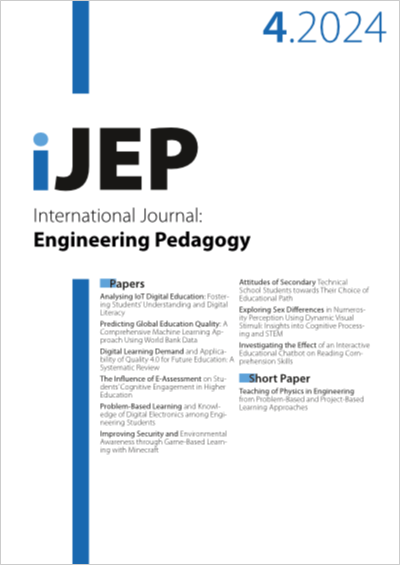Attitudes of Secondary Technical School Students towards Their Choice of Educational Path
DOI:
https://doi.org/10.3991/ijep.v14i4.41167Keywords:
vocational education research, transition from primary to secondary school, choice of educational path, pupils' attitudes, technical educationAbstract
This paper addresses the challenges regarding the choice of educational pathway for an adolescent from primary to secondary education. The aim is to highlight comparative differences in student decision-making when choosing a technically oriented study program. One sub objective is to emphasise the evolving preferences and roles of students in the decisionmaking process. The introduction provides the reader with a definition of decision-making processes and the choice of an educational pathway in the context of the Czech Republic. The following chapters present the main findings of the study. In Chapter 4, the risks associated with choosing a study path are presented, and the transition to the research part of the article is smooth. Three research hypotheses were defined to conduct the research. The study was conducted using a specifically designed non-standardised questionnaire. Details of the questionnaire design and the sample for the new research are provided. Subsections 4.3–4.6 present an overview of the results from the confirmatory and exploratory analyses. The discussion and conclusion summarise the results within a broader professional context. The primary findings indicate that students seem to be more independent in selecting technical schools. Students most often consider three criteria when making their choice: 1. the prospect of a career as a technician or a professional; 2. professional advantages in the job market; and 3. interest in the field and its study. We also present one of the possible correlation models of students’ personal preferences when choosing a secondary technical school.
Downloads
Published
How to Cite
Issue
Section
License
Copyright (c) 2024 Cestmir Serafin, Michal Mrazek, Michal Sedlacek

This work is licensed under a Creative Commons Attribution 4.0 International License.



